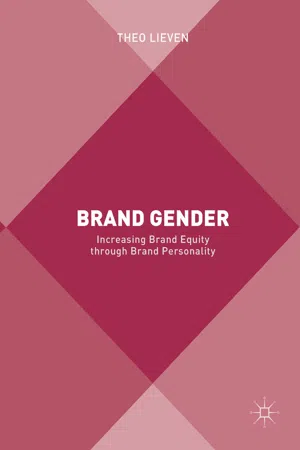Anthropomorphism and Animism
During the social program of the Swiss Consumer Research Summit in 2016, we took a tour of the Swiss Valais canton around Zermatt , which has an awesome view of the 4478-meter Matterhorn . One of my colleagues gaped, “What a majestic mountain !”
This sentence, as short as it is, reveals several secrets about the psychology of language . First, my colleague had a word for what she saw. She knew the name for “a landmass that projects conspicuously above its surroundings and is higher than a hill” (Merriam-Webster 2017) . Had she never seen such an elevation and if she did not know from other parts of the world that such great masses existed, she probably would not have had a word in her language for such a phenomenon. Thus, those who never left the desert and did not know about elevations higher than sand hills would not find a word for mountain in their language. This leads to a first insight about language: the words for existing entities are in the dictionary .
Whereas a mountain is an object, majestic is a trait describing a human who has or exhibits majesty, showing grand, magnificent, impressive, superb, noble, splendid, and dignified personality characteristics (Collins English Thesaurus 2015 ) . In this early stage of exposition of the ideas in this book, it is essential to differentiate between the meaning of the word majestic as a description of a functional property (being a majesty) and its psychological meaning describing the personality traits described above. There may have been majesties who were in no sense majestic. Throughout our discussions in this book, the described traits characterize human properties.
Everything that is useful for describing human character has been set down in language. Following this so-called sedimentation hypothesis , “those individual differences that are of most significance in the daily transactions of persons with each other will eventually become encoded into their language” (Goldberg 1981, 141). Majestic is one of these words.
Psychologists have tried to use this knowledge to describe humans within a holistic taxonomy, thereby categorizing different human characteristics that seem particularly interesting for psychiatry. Based on this “lexical hypothesis ,” researchers went to the dictionary to find a set of traits that could characterize the human personality. This method is called the (psycho-)lexical approach . It was elaborated by Klages (1932), Allport and Odbert (1936), Allport (1937), Cattell (1943), Eysenck (1947), Norman (1963), and Goldberg (1981); for a comprehensive overview, see John et al. (1988). At the beginning, every trait that seemed feasible was collected from the dictionary . Allport and Odbert (1936) began with 18,000 words and reduced this number to 4500. Cattell (1943) used this as a basis to create the 171 bipolar scales, which were condensed to 35 clusters. Goldberg (1990) reduced the list of 2800 items from Norman (1963) to 75 character traits, mostly by surveying participants’ self-assessments .
Through mathematical procedures, particularly factor analyses, these sets of traits were then divided into groups of characteristics, so-called personality constructs on which the respective traits “loaded” strongly. Next, these subgroups were assigned a suitable personality factor. In this way, Goldberg (1990) designed the famous Big Five personality model , incorporating the factors of extroversion, agreeableness , conscientiousness , emotional stability , and openness . Costa and McCrae (1992) enhanced this Big Five to the NEO FFI (Five-Factor Model) with 60 traits, and to the NEO PI-R (Personality Inventory-Revised) with 240 traits composed of 48 traits loading on five factors: neuroticism , extraversion , openness and experience , agreeableness , and conscientiousness . Particularly the factor “neuroticism ,” which replaced Goldberg’s (1990) “emotional stability ,” serves as an important personality identification in psychiatric examination.
Brand Personality
Personality characteristics concern humans. Yet, my colleague called the Matterhorn Mountain majestic , which may be inappropriate. Looking into the depths of history, however, reveals that at all times humans have assigned personality traits to inanimate objects, giving humanlike characteristics to things to better understand phenomena that they were not yet able to explain through the natural sciences. Particularly the nature religions made use of this strategy. In the language of Native Americans and according to Algonquian conceptions, Manitou , the “Great Spirit ,” animates the inanimate objects of the world. The theories behind this are those of anthropomorphism (Epley et al. 2007) or animism (Gilmore 1919; Harvey 2005). People try to explain the world through their own experiences. Tangible objects are characterized with attributes that actually belong to humans. Individuals evaluate inanimate things in the same way that they evaluate other people (Govers and Schoormans 2005).
During the second half of the last century, when the development of personality scales was at its zenith, marketing researchers started to take an interest in assigning personalities to brands. Levy (1959) was the first to note that “the consumer is not as functionally oriented as he used to be” (117) but is influenced by psychological things, as well as by symbols . Levy (1959) found cigarettes suitable to place on a continuum of degrees of gender. The same should be true for “cheeses and the brand versions of each kind” (121). This was the beginning of the assignment of human characteristics to brands, resulting in the seminal concept of “brand personality.” Then, in the 1990s, the research pace picked up. Aaker and Fournier (1995) addressed the conceptualization and measurement of brand personality. They described “a brand as a character , a partner and a person.” The most ...
